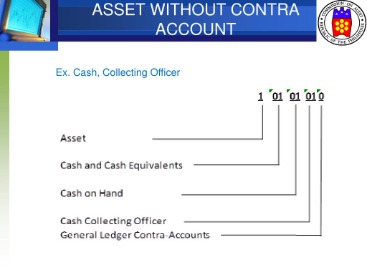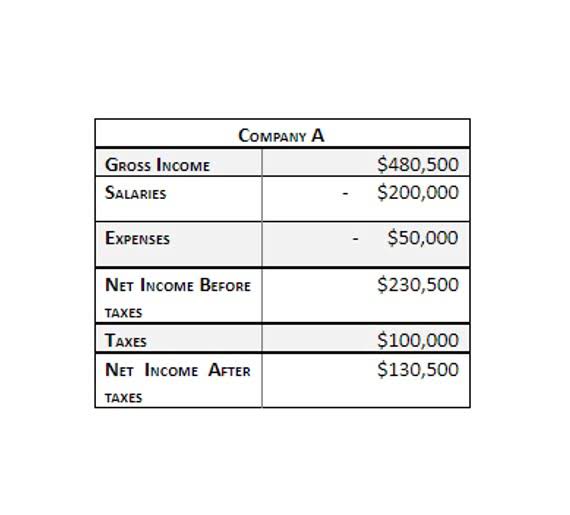Day Sales Outstanding DSO: Formula & Why It Matters
Once this information has been gathered, you’re ready to calculate your DSO. To understand the effectiveness of your accounts receivables process, analyze individual DSO values, and review trends in DSOs over time. Your team should aim for a DSO that aligns with your industry standards and supports your cash flow needs without compromising customer relations. Remember, effective DSO management is a balance of enhancing liquidity and financial health, and should be part of a broader strategic financial plan. Tracking these metrics can provide businesses with a comprehensive understanding of their financial health and effectiveness of their collections strategy. “Days Sales Outstanding” (DSO) is a financial metric that indicates the average number of days it takes a company to collect payment after making a sale.
Use an invoice template that includes your payment terms, due dates, and options
For example, if you had credit sales of $57,000 for the first quarter of 2020, with returns totaling $1,500, your total sales for the period would be $55,500. All of the information you need to calculate your DSO is available from the financial http://konkurent-krsk.ru/259.html statements produced by your accounting software application. If you’re still using a manual accounting system, you’ll need to total various ledgers and manually create financial statements before you’re able to calculate DSO.
Days Sales Outstanding Formula
DSO is typically calculated monthly or quarterly to provide timely insights into accounts receivable performance and cash flow management. A high DSO can indicate poor cash flow, potential bad debts, and inefficiencies in the accounts receivable process. DSO is not particularly useful in comparing companies with significant differences in the proportion of sales that are made on credit.
Overview: What is days sales outstanding (DSO)?
Use an invoice template that includes all of these important details, like the invoices generated by QuickBooks’ free invoice generator, or free invoice templates. If your team is looking to shorten your DSO and get paid faster, AR automation may be able to help. Try out our AR Automation ROI Calculator to see how much money your team can save by automating your receivables management. Businesses often struggle with maintaining consistent cash flow due to high DSO, arising from inefficient invoicing, poor communication with customers, and inadequate credit management.
If sales decreases in isolation DSO will increase indicating that may run into cash flow problems in future when the sales dip flows through the collection cycle. If sales decreases proportionally to accounts receivable, DSO will not increase. While this may not be welcome news, it does not indicate a change in the balance of sales and receivables, and therefore will not affect DSO. Accounts receivable refers to the outstanding balance of accounts receivable at a point in time here whereas average sales per day is the mean sales computed over some period of time. This can be annual as in the formula above, or it can be any period of time considered useful to the company. Because this is an average general KPI, though, choosing a time period that’s too low may introduce undesirable artifacts in the data.
Implications of DSO on Customer Payment Behavior
The current dollar amount of open invoices, based on days since the invoice date. Don’t keep fighting with spreadsheets and manual processes to customize metrics. Reach out for a personalized demo of Metric Builder to learn how you can start going deeper on DSO and other critical KPIs. The more granular you can get with the calculation, the more strategic insights you’ll get from the results. Metric Builder lets you bring data in from any system, any format, to create any metric you can think of — all in a lovable UI that leverages a familiar pivot table experience and a no-code approach.
- DSO may vary consistently on a monthly basis, particularly if the company’s product is seasonal.
- The time it typically takes to collect payment from your customers after you’ve delivered a product or services.
- Including information on your invoices like due days, payment terms and options can help keep you and your customers on the same page.
- Days sales outstanding (also known as average collection period or days receivables) refers to the average number of days it takes for a company to receive payment after making a sale on credit.
How to Calculate Days Sales Outstanding (DSO)
Company Xing had Gross Credit Sales of $500,000 in a year, Sales Returns of $50,000, and Accounts Receivables of $90,000. For example, the average DSO for discount stores, like Dollar General, Burlington Stores, etc., is approximately 4 days. On the other hand, the same value is unexpectedly low for the oil and gas sector as its normal DSO ranges between 50 and 130 days. In this post we explain https://vintage-technics.ru/Eng-Dictograph.htm the why, what and how of this important metric — before explaining how process mining can improve DSO ratios. Join the 50,000 accounts receivable professionals already getting our insights, best practices, and stories every month. Transitioning away from checks in favor of digital payments can help you collect payment faster, as you won’t have to deal with unpredictable mail delays.
What is Days Sales Outstanding (DSO): Definition, Formula, and Best Practices
If you’re calculating DSO for the month, you use the number of days in the month. In our example, we’re calculating DSO for the quarter, so we’ll need to add together the number of days in each month. There are many terms you can offer to clients, and if you find certain customers are consistently behind on payments, it may help to https://drpostdoc.com/benefits-of-legal-licensed-software/ shorten your payment terms. Research industry standards and benchmarks for DSO to see how your company compares to peers. This helps identify if your DSO is within an acceptable range or if it needs improvement. It’s vital to view DSO in context, considering industry benchmarks and trends over time rather than relying on it solely.
Determine average accounts receivable for the period
That said, an increase in A/R represents an outflow of cash, whereas a decrease in A/R is a cash inflow, as it means the company has been paid and thus has more liquidity (cash on hand). But over the course of the waiting period, the company has yet to be paid in cash, despite the revenue being recognized under accrual accounting. A good or bad DSO ratio may vary according to the type of business and industry that the company operates in. It suggests that the company’s cash is flowing in at a reasonably efficient rate, ready to be used to generate new business.
- It depends on your standard payment terms — if you allow net 60 day payments, for example, you’re unlikely to have a DSO ratio in the 20 to 30-day range.
- We then multiply 15% by 365 days to get approximately 55 for DSO, which means that once a company has made a sale, it takes ~55 days to collect the cash payment.
- Customers are often equally frustrated by any obstacles impeding smooth payment processes.
- Let’s use an example of a business that has $10,000 in accounts receivable on January 1, 2024.
It reflects customer buying and payment behavior and shows the effectiveness of your credit and collection policies. The time it typically takes to collect payment from your customers after you’ve delivered a product or services. A high DSO number means that it’s taking longer than you expected to collect cash from customers.
- This indicator helps businesses assess the efficiency of their accounts receivable processes and is critical for maintaining healthy cash flow.
- Understanding and managing Days Sales Outstanding is vital for ensuring a company’s financial health.
- Better than the average – which we all know isn’t that insightful – you’ll find below the median DSO for different industries.
- Similarly, companies offering extended payment terms (e.g., net 60 or net 90) might see a higher DSO compared to businesses that require payment within 30 days.
- In this article, we’ll explain what days sales outstanding is, the value of tracking it, and how to calculate DSO.
While some companies have payment terms of 30 days, others offer more and others offer less. Having cash on hand also enables you to take advantage of early payment discounts from suppliers and reduces the need for external financing, which can come with high-interest costs. An increase in sales can artificially lower the DSO value, giving a misleading impression of improved efficiency. Conversely, a decrease in sales can raise the DSO, suggesting inefficiency where there may be none. For our hypothetical clothing retailer, it is presumably necessary to improve its current collection methods, as confirmed by its DSO trailing its industry peers (i.e. competitors). Therefore, the only remaining step is for the customer to hold up their end of the bargain by actually paying the company in cash.

